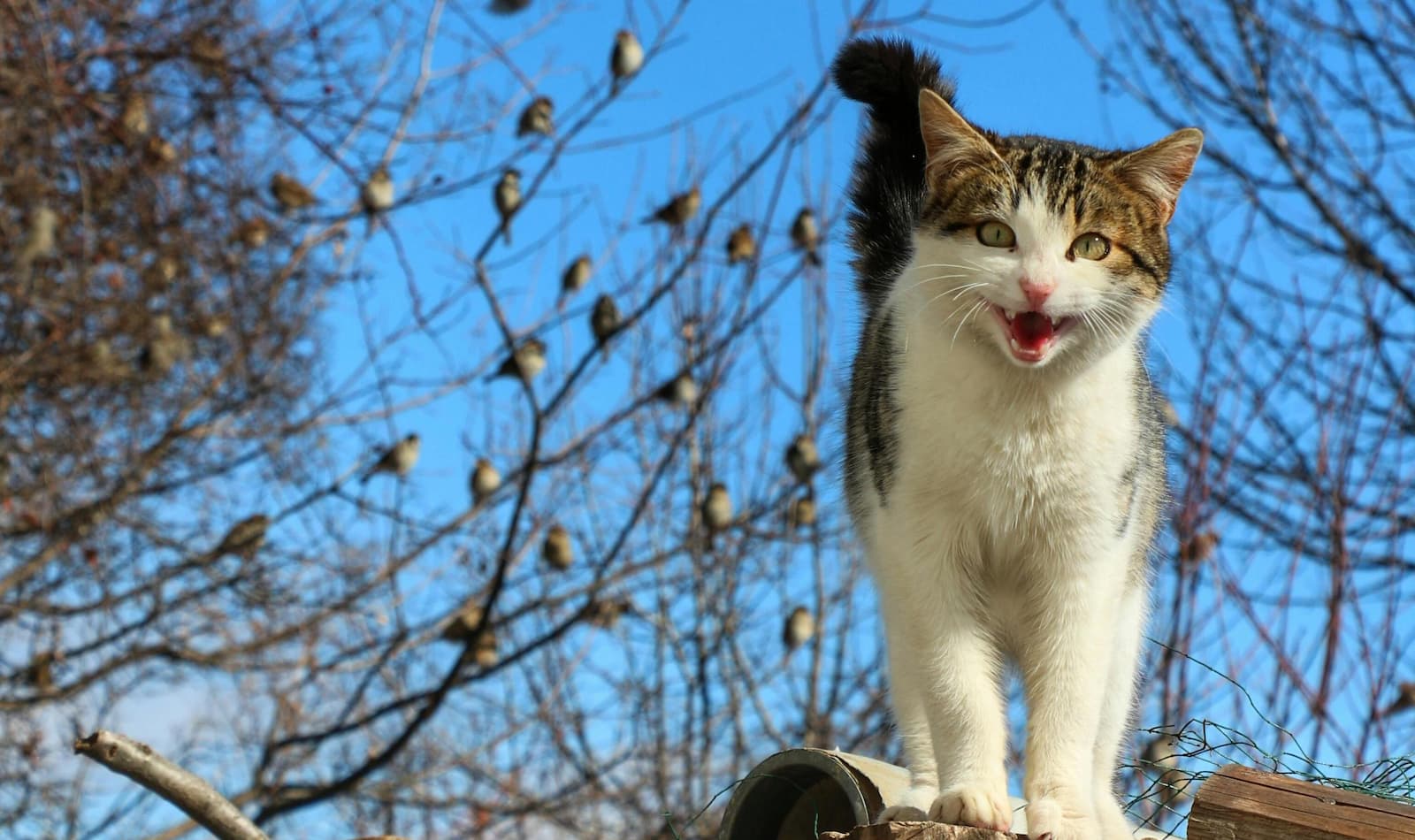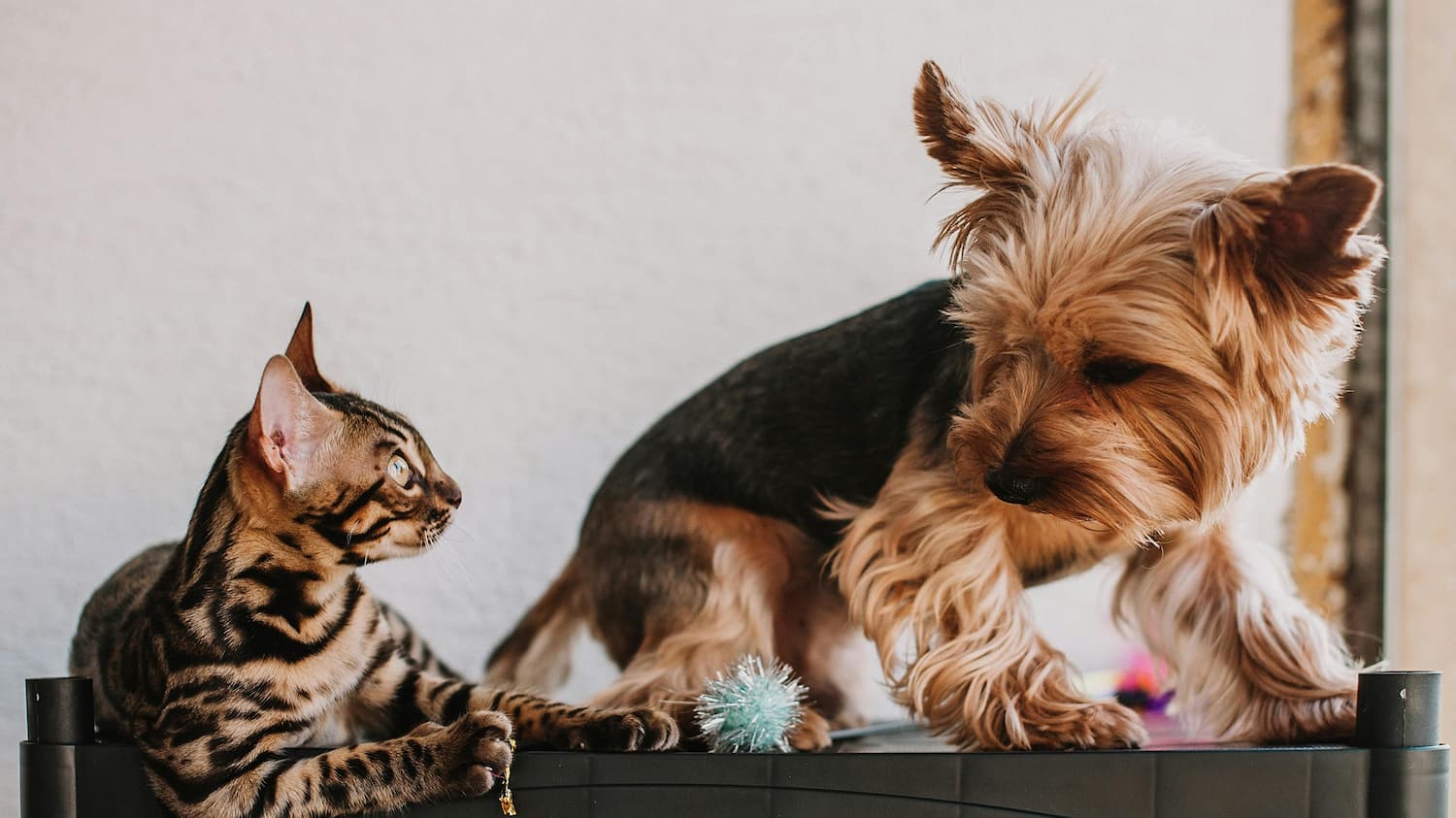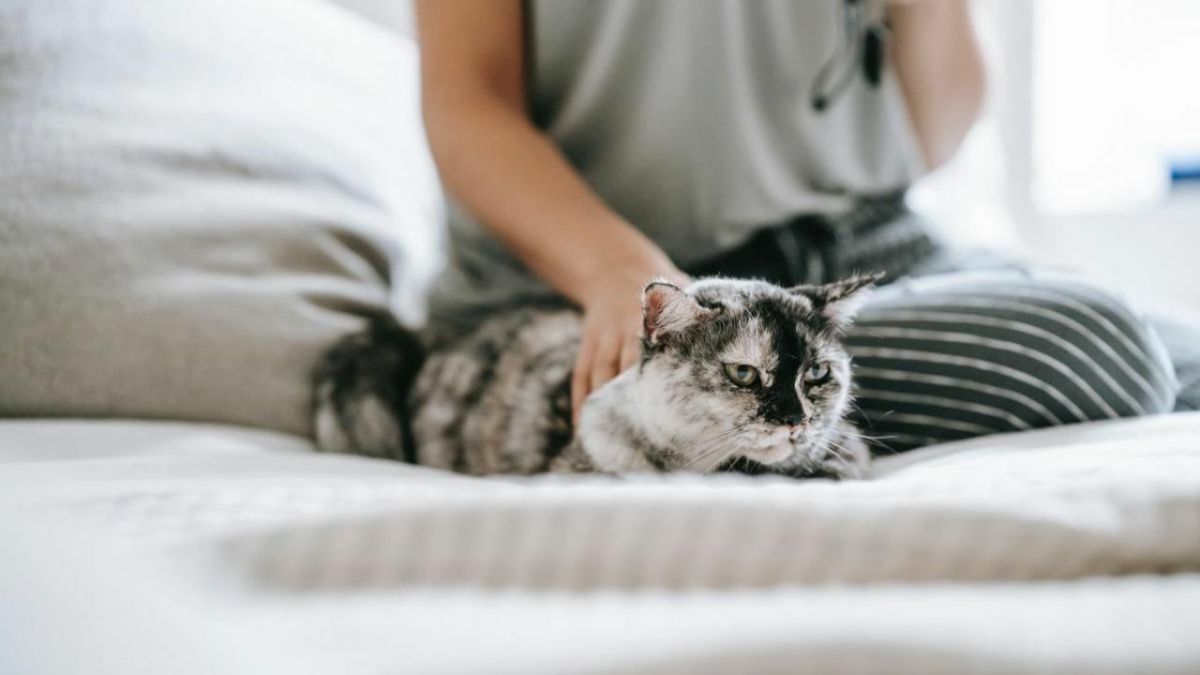If, like me, you’ve spent any time scrolling through adorable cat videos on YouTube, chances are you’ve come across the oddly mesmerizing sound of cats going “ekekekkekkek.” It’s a noise that’s both hilarious and fascinating, and it happens as these furry predators fixate their gaze on birds or bugs. But why do cats chatter at birds, anyway? I’m going to tell you about the science behind this feline vocalization and other noises cats make. But first, enjoy the video of 2024’s greatest “eks”:
This adorable compilation video of cats chattering is one of many that has racked up a huge amount of views by delighted cat enthusiasts around the globe. Do you notice how their jaws move rapidly while emitting the staccato, clicking sound? It kinda makes you wonder what’s going on inside their clever little heads, doesn’t it? If you’re curious as to what this sound is, and why cats make it, read on.
The Science of Cats’ “Ekekekekekek” Noise
This distinct chatter, often described lovingly by its repetitive “ekekekekekek” sound, is a fine example of feline vocalization. Domestic cats have developed a sophisticated communication system over thousands of years. But unlike a purr or meow, chatter is specifically associated with prey.
Why Do Cats Chatter at Birds?
Researchers believe chatter is triggered by a mix of excitement and frustration. When a cat spots prey—a bird or an insect, for example, it experiences a surge of energy as it prepares its body to pounce. But when that prey is too far out of reach—on the other side of a window or perched high in a tree—this energy is funneled into the rapid jaw movements and clicking noise we call chatter.
Interestingly, here’s another reason why cats chatter at birds: the chatter sound may also mimic the calls of birds, and that possibly tricks them into getting closer. While it’s still unclear if cats consciously attempt to imitate their prey, studies suggest this behavior could give wild cats a slight advantage when hunting.

Why Is Cat Chattering So Cute?
Part of what makes “ekekekekekek” so endearing, and why I love watching the video compilations, is seeing the combination of predatory focus and vocal vulnerability. When you watch a cat, an apex mini-predator, seemingly frustrated by a bird it can’t reach, it seems to tap into something. Perhaps the human tendency to find charm in their earnest determination?
Plus, the sound itself is unexpected. Unlike the meows, purrs, or hisses we commonly associate with our kitty friends, chatter feels almost otherworldly. In fact, some have compared it to a dolphin’s clicks or even alien communication, which really adds to its intrigue.
Did You Know: It’s Unique to Each Cat
Just like people sound different and have unique voices, cats have individual variations in their chatter. Do you notice how some might include a few chirps or trills alongside their “ekekekekekek”? Meanwhile, others stick to a pure, voiceless staccato. Many cat owners note that their pets’ chatter is as distinctive as their personalities.
In response to the video clip above, one YouTuber noted “They all use the same word for BIRD ☝️ Each cat has its own unique accent!“

The Internet Loves Cat Chatter
The charm of chattering cats is undeniable, and it’s why the internet can’t get enough of these viral videos. From a fluffy Maine Coon sitting in a windowsill or a cheeky Siamese lurking in the shadows, these video compilations showcase cats of all breeds and personalities. And they are all united by their mutual fascination for out-of-reach prey.
As you watch these clips, you might even notice your own cat reacting to the sound of chatter. Because felines are excellent mimics, yours might be inspired to join the “ekekekekekek” symphony. And that might be true even if they’re indoors with no prey in sight.
More Cat Vocalizations and What They Mean
Besides the mostly silent “ekekekekekek” noise cats make when facing birds or insects, they can make voiced noises, too (tweet and tweedle). Interestingly, there can be variations in these sounds between different cats. And since each cat’s call is unique, there are differences in how each individual cat makes these sounds.
The following table describes some common cat vocalizations and their meanings, according to studies.
| Vocalization | Description | When It’s Used |
|---|---|---|
| Caterwaul or Mowl | Loud, long whine with changing pitch | Males during mating; females as a warning |
| Chatter | Quick jaw movements making a smacking sound | When wanting prey that’s out of reach |
| Chirp | Short, high-pitched sound like a bird | To find other cats or when wanting something |
| Copulatory Cry | Low growl made by female during mating | During mating |
| Growl | Low, rumbling noise | To show aggression or warn of danger |
| Gurgle | Soft, bubbling sound | Friendly interactions, especially with kittens |
| Hiss | Long hissing sound | When scared or surprised |
| Howl | Tonal sound, usually shorter than yowl | When feeling threatened |
| Mew (Meow) | The typical “meow” sound | Many reasons: social, mating, contact |
| Moan | Long vowel sounds like “o” or “u” | To signal danger or warn off an opponent |
| Murmur | Soft, trilling sound | Friendly approach and play |
| Pain Shriek | Short, intense cry | When in active fight |
| Purr | Continuous, rhythmic sound made during breathing | When content or signaling friendliness |
| Snarl | Louder, higher-pitched growl | To show aggression |
| Squeak | High-pitched, raspy sound | During play or when expecting food |
| Spit | Short, explosive noise with a sudden movement | To show aggression |
| Trills | Soft sound like a purr | As a greeting |
| Tweedle | Long chirp or tweet with voice changes | When wanting something |
| Tweet | Soft, weak chirps with varying sounds | When wanting something |
| Yowl | Long, varying vocalization | During mating or mild threat |

Final Thoughts
The “ekekekekekek” noise is a heartwarming glimpse into the sophisticated communication and instinctual behaviors of our feline friends. Next time you catch your cat fascinated by something moving outside the window, take a moment and reflect on why cats chatter at birds. Appreciate the mix of ancient hunting instincts and individual personalities that make their vocalizations so captivating.
In the meantime, grab a cup of coffee and enjoy the countless adorable “ekekekekekek” compilations on YouTube. Who knew that a cat’s playful frustration could bring so much joy to our screens?
Sources
- Tavernier, C., Ahmed, S., Houpt, K. A., & Yeon, S. C. (2020). Feline vocal communication. Journal of veterinary science, 21(1), e18. https://doi.org/10.4142/jvs.2020.21.e18
- Understanding Feline Language – The Humane Society of the United States




